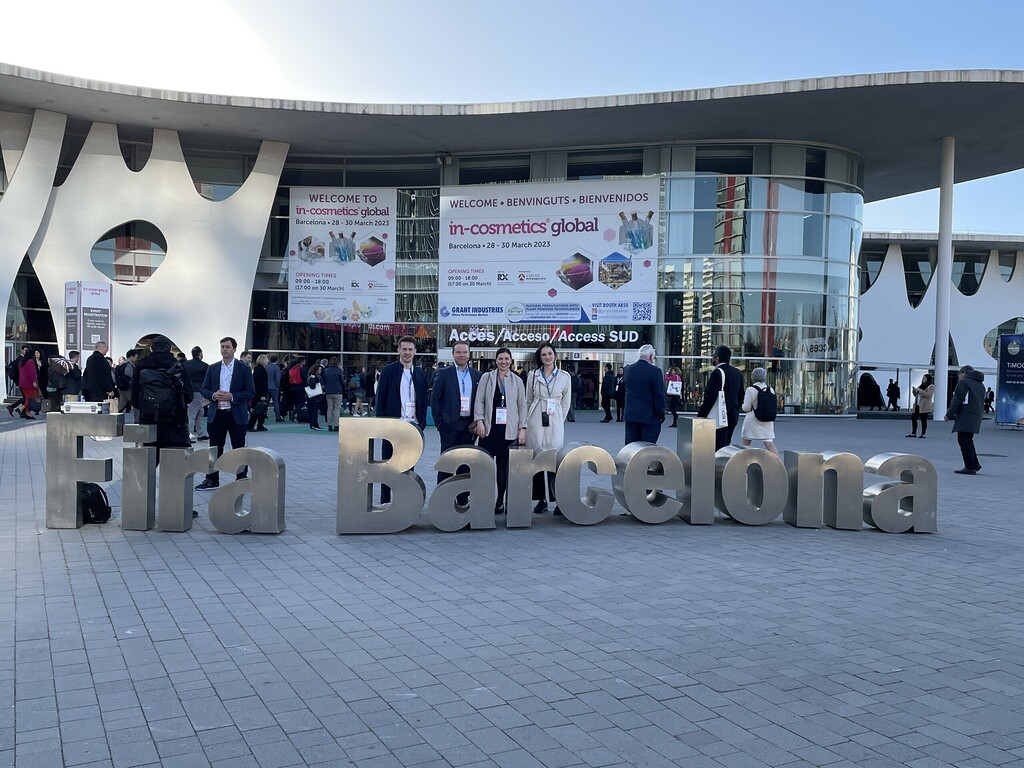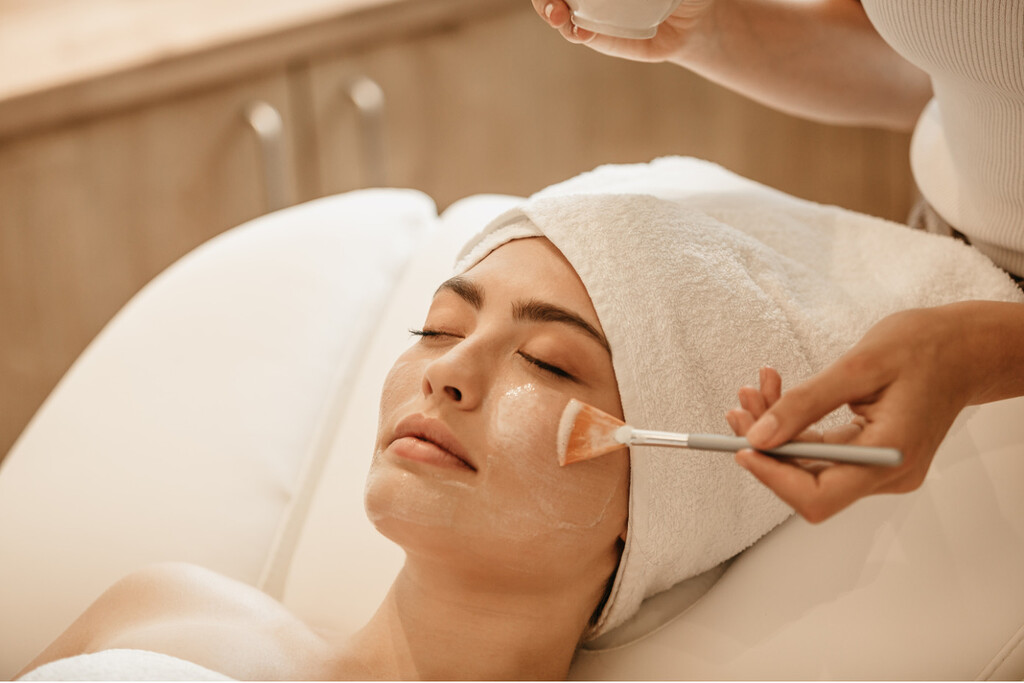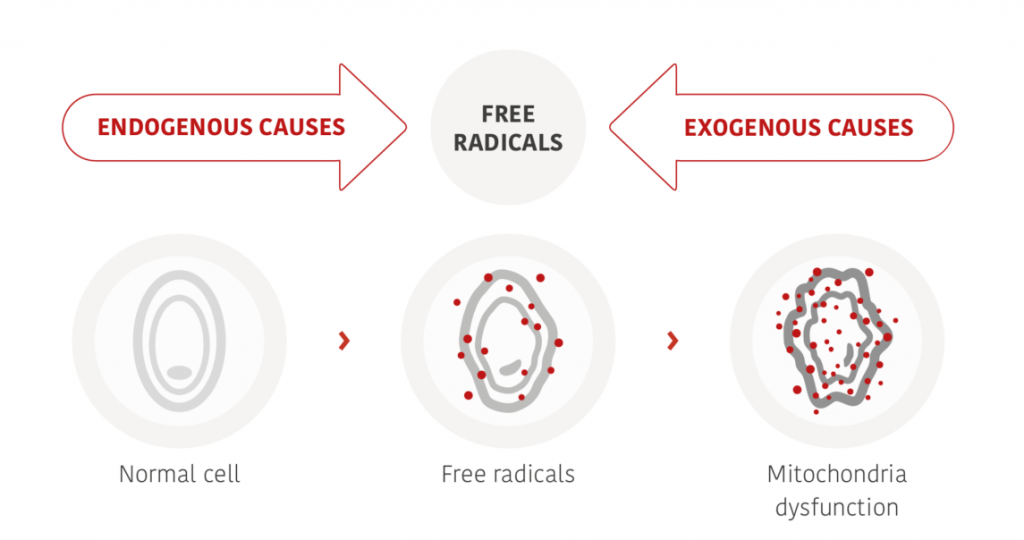Astaxanthin – the perfect choice for anti-pollution products
Abstract
As the largest human organ, the skin acts as main protective shield against harmful environmental influences. We often forgotten that even the air contains dangerous substances. The pollutants contained in the air can be absorbed by the skin and trigger free radicals that cause serious damage in the skin’s structure. This is the reason why the concept of anti-pollution cosmetics is gaining more and more importance. Their purpose is to provide the skin with protection against all negative environmental influences, such as smog or radiation. One possibility is to generate protection indirectly, using several raw materials from the segment of antioxidants. However, if you want to design a highly modern and extremely effective formulation, you should not forget the trend-setting vegan ingredient astaxanthin. The reddish pigment from the carotenoid family is extracted from the alga Haematococcus pluvialis and considered the strongest naturally occurring antioxidant. To minimise long-term skin damage associated with pollution, astaxanthin can be used as a second-line protection. Its anti-inflammatory activity has been known for a long time and has been confirmed by numerous studies. Especially for cosmetic products, BDI-BioLife Science has developed its own raw material containing 5% of astaxanthin. The properties of the red diamond have been substantiated by in vivo and in vitro proof of efficacy. While its effect against blue light-induced stress has already been proven in preliminary studies, the current research takes a closer look at the issue of blue light.
Natural and highly effective ingredients are increasingly becoming important; especially in the field of anti-pollution, the cosmetics industry is constantly looking for new solutions. One possible raw material could be the astaxanthin-containing antioxidant AstaCos® OL50. This Cosmos-certified active ingredient combines the astaxanthin-containing algae extract Haematoccocus pluvialis with high-quality organic jojoba oil and is standardised to an astaxanthin content of 5%. Due to its enormous antioxidant capacity and its ability to neutralise free radicals, astaxanthin is recommended for use in anti-pollution cosmetics. In this article, you will find out why anti-pollution is more than just a trend and why astaxanthin is a possible solution.
Protection from pollutants – more than a trend
In the past, the issue of environmental pollution has mainly been important in Asia, with its massive cities and metropolitan air problems leading to smog. However, for a considerable time, pollution has also played a significant role in the western world, especially in Europe and the US. Hence, more and more cosmetic products are now addressing this topic and have successfully been marketed.[1] This fact is underlined by a study showing that in the first quarter of 2016, more than 70% of new skincare products worldwide contained an anti-pollution claim.[2] Air pollution is now an omnipresent environmental and even health problem affecting the whole world.
It is important to differentiate between natural and human-made air pollution. Natural pollution from fire or volcanic eruptions is a minor contributor, while most of the pollution is man-made, for example due to the use of fossil fuels to generate heat or energy, or due to agricultural activities. Air pollution can be divided into primary and secondary pollutants.[3] Primary pollutants are emitted directly from pollution sources and include, for example, gases (CO2, SO2 and NO2), low molecular weight hydrocarbons, even heavy metals (e.g., lead) as well as particulate matter (PM). Secondary pollutants are formed in the atmosphere through chemical and photochemical reactions with primary pollutants, such as ozone.[1,3] Figure 1 gives an overview of pollutants in the environment.
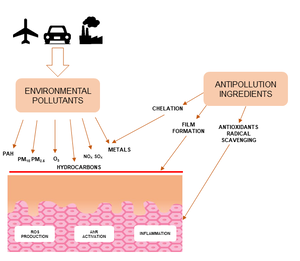
Figure 1: Environmental pollutants.[4]
As diverse environmental pollution is, as complex is dealing with this particular, mostly invisible challenge. The first step in combating pollution is often an adequate cleansing of the skin to remove deposited chemicals. As a first line of defence against unwanted environmental influences, the epidermis can be isolated, which can be done when there is a cohesive and non-occlusive film on the surface of the skin. Thus, direct contact with atmospheric pollutants can be avoided, especially when film-forming raw materials of synthetic or natural nature are used. Another strategy is to incorporate antioxidants into the anti-pollution formulation to neutralise free radicals or stimulate the antioxidant defence system for protection against the damage caused by free radicals.[3] Therefore, the second line defence works indirectly against pollutants, but directly in the body to stop negative processes.
The red diamond amongst radical scavengers
Astaxanthin belongs to the group of carotenoids, and more precisely, to the xanthophylls and is considered the strongest natural antioxidant. Several natural organisms are able to produce astaxanthin, such as bacteria, algae and yeasts, but the highest concentrations of natural astaxanthin can be derived from the freshwater microalga Haematococcus pluvialis. Due to its enormous antioxidant effect, astaxanthin is called the red diamond among radical scavengers and has been proven to counteract reactive oxygen species (ROS) much more efficiently compared to other antioxidants. Thanks to its unique molecular structure, it is non-pro-oxidative.[5]
The enormous antioxidant capacity of astaxanthin is due to its unique mechanism of action in our body. The length and shape of an astaxanthin molecule allow it to span the cell membrane, with one end of the molecule in the lipid-soluble part of the cell and the other end in the water-soluble part. Therefore, astaxanthin is able to protect the entire cell. Numerous studies have concluded that astaxanthin can improve the overall skin health and counteract skin ageing and inflammatory processes (Figure 2). Due to its multiple properties, astaxanthin works exactly where it is needed and penetrates deep into the skin layers. Especially the biological cell protection and the strong anti-ageing effect can be highlighted.
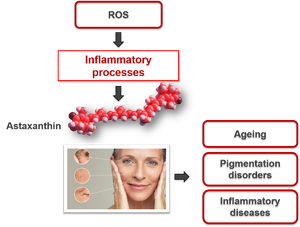
Figure 2: Astaxanthin acts against oxidative stress and ROS.
Blue light radiation as part of the pollution
Using film-forming agents as a shelter can only protect against physical influences such as particular matter or chemicals, but not against harmful radiation (e.g., UV, infrared or blue light radiation).[6] Especially the combination of daily radiation and the oxygen-rich atmosphere in which we live generates stress and unwanted processes in our skin.[7] Damage caused by sunlight can lead to wrinkling, dry skin and general pigmentation disorders. In the worst case, this damage can even lead to skin cancer. Sunlight consists of many fractions and can be classified by wavelength and energy level which penetrate the skin into different depths (Figure 3).
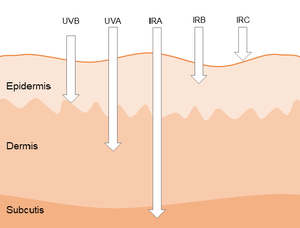
Figure 3: Classification of light by penetration depth.[10]
The UV component of sunlight is absorbed by the skin, which accelerates the formation of reactive oxygen species (ROS) in the skin.[8] Long-term and combined irradiation of human skin with UVB and UVA leads to reduced skin renewal potential and to structural damage. By penetrating deep into the skin down to the dermis, the rays destroy collagen and elastin which enable the skin’s firmness and elasticity.[9] Another type of radiation is infrared radiation (IR) which includes wavelengths from 700nm to 1mm. Within this group, a distinction can be made between IR-A (700 to 1400nm), IR-B (1400 to 3000nm) and IR-C (3000nm to 1mm). Almost half of the solar energy that reaches the earth’s surface is in the IR range, so, this type of radiation has significant biological effects on the human skin.[11, 12] Visible light (VL) covers the spectral range between 400 and 700nm and is classified as non-harmful radiation according to experts. About 40% of the sun’s rays reaching the earth are visible light. Despite the omnipresent irradiation by visible light outdoors, only a few studies have dealt with the effects on the skin to date. VL is may cause various skin diseases as well as phototoxic and photoallergic skin reactions.[13]
For the cosmetics industry, a specific range of visible light is of great importance as contact cannot be avoided. Blue light has a wavelength of 400 to 500nm and is also called high-energy visible light. Most blue light radiation is generated by the sun, but we are also exposed to it due to the increased use of digital screens and artificial light.[14, 15] Similar to UV radiation, blue light is capable of generating ROS in the skin, causing significant damage. Unlike UV light, blue light has longer wavelengths and less energy, which allows it to penetrate deeper into the skin layers and cause DNA damage.[16, 17] The main problem with blue light irradiation is ROS formation, which, as already mentioned, can lead to further negative effects. For example, individuals with darker skin types are more likely to react to increased visible light irradiation with hyperpigmentation due to the formation of a protein complex that is seen more often in darker skin types and generates the melanogenesis enzymes tyrosinase and dopachrome tautomerism.[18, 19] When it comes to oxidative stress caused by blue light, flavins and pigments in the skin are the most important photosensitisers. Furthermore, there is evidence that mitochondrial flavin and cytochrome proteins are degraded by blue light.[20] Consequently, the flavins produce superoxide (O2-) when exposed to blue light, an extremely reactive anion radical and major free radical.[21, 22] However, the main reason for blue light damage is probably not the overcoming of cellular antioxidant defences, but the constant production of small amounts of radicals escaping the defence mechanisms.[21]
There are several reasons why a globally effective active ingredient against environmental pollution poses a major challenge. As the range of pollutants and environmental hazards affecting consumers in different parts of the world is incredibly diverse, there are different approaches for the large field of anti-pollution cosmetics. In case you want to specifically counteract radiation, or more precisely, blue light, you must prevent skin damage at the molecular level, which antioxidants are mostly used for.[23, 24] As mentioned above, one of the most promising natural antioxidants is astaxanthin. Due to industry efforts to source natural and sustainable raw materials, according awareness is steadily increasing.
Efficacy of astaxanthin on blue light-stressed human ex vivo skin
Our skin is subjected to daily assaults by external radiation like blue light. Keratinocytes are the dominant cell type in the uppermost layers of the skin which play a special role in skin renewal and the skin’s repair system. Filaggrin is an intermediate filament-associated protein that aids the packing of keratin filaments during terminal differentiation of keratinocytes [25] as well as a major structural protein that appears to function as keratin-aggregating protein. Filaggrin is stored in the granular layer as profilaggrin in an organellar body called keratohyalin granule.[26] During keratinisation, profilaggrin are cut by proteases while the serine threonine residues domains are dephosphorylated to form filaggrin. Hence, the filaggrin degrades into small peptides which act as natural moisturisers and as UV ray absorbers (Figure 4). Under blue light stress, there is a significant decrease in profilaggrin expression in untreated skin explants.[26, 27]
A recent ex vivo study testing an oleoresin containing 5% astaxanthin diluted in jojoba oil addressed the issue of blue light and focused on its use as an anti-pollution ingredient. The objective of this study was to evaluate the efficacy of the red diamond in a model of ex vivo human skin explants under blue light stress. More specifically, profilaggrin expression was evaluated on skin explants maintained ex vivo.
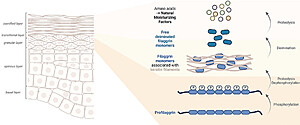
Figure 4: Degradation of profilaggrin.[26]
Material and methods
The human skin explants used were 11mm in diameter with Fitzpatrick skin phototype 3. The skin explants were stored in an incubator at constant conditions of 37°C and 5 volume fraction CO2. A genoskin medium was used as culture medium and Hanks’ Balanced Salt Solution (HBSS) as assay medium. Two different test substances were used in this experiment:
- oleoresin containing 5% astaxanthin diluted in jojoba oil
- 100% jojoba oil (placebo control)
When skin explants were received (day 0), they were cultured for 1 hour before the test compounds were applied topically. Next, the excess of test media was removed with a swab and the surface of the explants rinsed with phosphate-buffered saline (PBS) (day 1). The explants were put in place in the irradiation chamber and irradiate
d in the presence of assay medium until 80 J/cm2 (wavelength 427nm) was reached. The irradiation was carried out with 427nm, as there are two different types of lamps. The use of Kessil PR160 for blue light exposure can lead to more stress as it produces shorter wavelength rays compared to other systems (Figure 5).
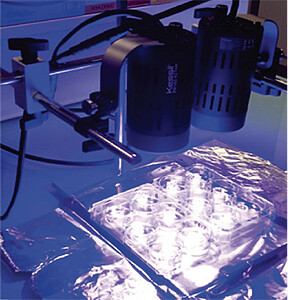
Figure 5: System of blue light exposure (Kessil PR160).[26]
Each skin explant was then treated again with the test compounds and incubated for 30 minutes, before the excess was removed with a swab. Finally, the explants were recovered (day 2). The following test conditions were examined 3 times each before analysing:
- untreated skin explants
- blue light-stressed skin explants
- 100% Jojoba oil + blue light-stressed skin explants
- 02% oleoresin containing 5% astaxanthin diluted in jojoba oil + blue light-stressed skin explants
- 05% oleoresin containing 5% astaxanthin diluted in jojoba oil + blue light-stressed skin explants
- 1% oleoresin containing 5% astaxanthin diluted in jojoba oil + blue light-stressed skin explants
Profilaggrin immunolabelling was performed as follows. The skin explants were fixed in formaldehyde solution, the fixed samples were then dehydrated in serial ethanol baths with increasing concentration before being embedded in paraffin. Transverse cuts were made with a microtome (5µm thickness, 2 cuts per microscope slide, 1 microscope slide per skin explant) and stored at room temperature for the analysis. The slides were deparaffinised and incubated at 95°C in an unmasking solution to optimise antigen-antibody interaction. The slides were cooled at room temperature in the same solution. After saturation with blocking buffer (TBS-Tween-2% BSA), the slides were incubated overnight with the primary antibody solution directed against the profilaggrin marker. After washing, binding sites recognised by the primary antibody were detected with a fluorescent antibody (GAM-568). The slides were mounted with ProLongTM containing colour (DAPI) to stain the cell nuclei.
The slides were observed with a ZEISS 710 confocal microscope. The images were taken and processed with the ZEN software (lens x20) by ZEISS (Figure 6). Three images were taken per replicate (9 images per condition). For each marker, fluorescence intensity was measured using ImageJ software. Profilaggrin expression was quantified by measuring fluorescence intensity normalised to epidermal area. The raw data was processed and analysed using Microsoft Excel.
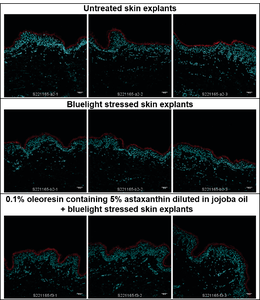
Figure 6: Profilaggrin expression as described.[26]
Results
Blue light stress in ex vivo human skin led to considerable decrease in profilaggrin expression (Figure 7). On the contrary, the use of 0.02% oleoresin containing 5% astaxanthin diluted in jojoba oil already resulted in an increase of 11% in profilaggrin expression. Using a concentration of 0.05%, the profilaggrin expression increased by 12%. The tested 0.1% oleoresin containing 5% astaxanthin diluted in jojoba oil improved the profilaggrin expression by 15%. The trial with jojoba oil (placebo) had no effect on the profilaggrin expression.[26]
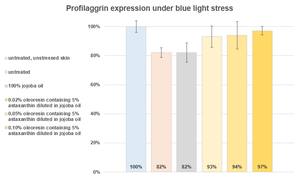
Figure 7: Profilaggrin expression under blue light stress.[26]
Conclusion
Anti-pollution is more than just a trend; therefore, the demand for these cosmetic products is increasing all over the world. The cosmetics industry is also looking for new ways to protect our skin against harmful influences. As a result, the industry is very innovative and has already come up with a number of ways to combat pollution. With the focus on sustainable products, efficient and green active ingredients are also becoming more and more relevant. Astaxanthin has been known as an extremely powerful ingredient in nutritional supplements for many years. However, a new study shows that even at very low concentrations, astaxanthin-containing cosmetic raw materials offer good protection against the negative environmental effects of excessive blue light irradiation when applied preventively and curatively. Further studies on this topic will be carried out to obtain more reliable data . Due to such promising studies, astaxanthin is expected to become even more important in the cosmetics world over the coming years, and it will certainly also be of interest to a large number of cosmetics brands.
References
[1] Pitman, S. Euromonitor: The Evolution of AntiPollution in Europe and North America: Part I; Cosmetics Design USA.com; William Reed Business Media SAS: West Sussex, UK, 2017.
[2] Spencer, N. What Does Pollution Mean for Your Skin; Cosmetics Design-Asia.com; William Reed Business Media SAS: West Sussex, UK, 2016.
[3] Krutman, J.; Liu, W.; Li, L.; Pan, X.; Crawford, M.; Sore, G.; Seite, S. Pollution and skin: From epidemiological and mechanistic studies to clinical implications. J. Dermatol. Sci. 2014, 76, 163–168.
[4] Juliano C., Magrini G.A. Cosmetic Functional Ingredients from Botanical Sources for Anti-Pollution Skincare Products. Cosmetics. 2018; 5(1):19. https://doi.org/10.3390/cosmetics5010019
[5] Ambati, R.R. et al. Astaxanthin: Sources, extraction, stability, biological activities and its commercial applications – A review, Marine Drugs, 12(1), 2014; 128–152.
[6] Macaela, M. How Your Phone’s Blue Light Could Be Damaging Your Skin, According to Derms. Jul 14, 2020, https://www.allure.com/story/blue-light-phone-skin-effects [accessed: 01 Sept., 2022].
[7] Valacchi, G., Sticozzi, C., Pecorelli, A., Cervellati, F., Cervellati, C., and Maioli, E. Cutaneous responses to environmental stressors. Ann N Y Acad Sci. 2012; 1271:75-81.
[8] Pinnell SR. Cutaneous photodamage, oxidative stress, and topical antioxidant protection. J Am Acad Dermatol. 2003; 48:1–19.
[9] Zhou, X., Cao, Q., Orfila, C., Zhao, J., and Zhang, L. Systematic review and meta-analysis on the effects of astaxanthin on human skin ageing, Nutrients, vol. 13, no. 9, pp. 1–18, 2021, doi:10.3390/nu13092917
[10] McDaniel, D., Farris, P., and Valacchi, G. Atmospheric skin aging—Contributors and inhibitors. J Cosmet Dermatol. 2018; 17: 124–137. https://doi.org/10.1111/jocd.12518
[11] Cho, S., Shin, M.H., Kim, Y.K. et al. Effects of infrared radiation and heat on human skin aging in vivo. J Investg Dmermatol 2009; 14:15–19
[12] Sklar, L.R., Almutawa, F., Lim, H.W., and Hamzavi, I. Effects of ultraviolet radiation, visible light, and infrared radiation on erythema and pigmentation: a review. Photochem Photobiol Sci. 2013; 12:54–64.
[13] Kollias, N. and Bager, A. An experimental study of the changes in pigmentation in human skin in vivo with visible and near infrared light. Photochem Photobiol. 1984; 39:651–659.
[14] Schiavi, C. and Giannaccare, G. Eye and Pollution. In: Capello, F. and Gaddi, A.V. (eds). Clinical handbook of air pollution-related diseases. Cham, Switzerland: Springer International Publishing; 2018:341–351.
[15] Zou, L. and Dai, J. Blue light and eye health. Zhonghua Yan Ke Za Zhi. 2015; 51(1):65–69.
[16] Pissavini, M., Pujos M., and Doucet, O. Total exposure: the future of sun care is full light protection. Cosmet Toiletries. 2018; 133(4):26–34.
[17] Opländer, C., Hidding, S., Werners, F.B., Born, M., Pallua, N., and Suschek, C.V. Effects of blue light irradiation on human dermal fibroblasts. J Photochem Photobiol B. 2011; 103(2):118–125.
[18] Regazzetti, C., Sormani, L., Debayle, D. et al. Melanocytes sense blue light and regulate pigmentation through Opsin-3. J Invest Dermatol. 2018; 138(1):171–178.
[19] Duteil, L., Cardot-Leccia, N., Queille-Roussel, C. et al. Differences in visible light-induced pigmentation according to wavelengths: a clinical and histological study in comparison with UVB exposure. Pigment Cell Melanoma Res. 2014; 27(5):822–826.
[20] del Olmo-Aguado, S., Núñez-Álvarez, C., and Osborne, N.N. Blue Light Action on Mitochondria Leads to Cell Death by Necroptosis. Neurochem Res 41, 2324–2335 (2016). https://doi.org/10.1007/s11064-016-1946-5
[21] Nakashima, Y., Ohta, S., and Wolf, A.M. Blue light-induced oxidative stress in live skin. Free Radic Biol Med. 2017; 108:300–310.
[22] Pimenta, F.M., Jensen, R.L., Breitenbach, T., Etzerodt, M., and Ogilby, P.R.. Oxygen-dependent photochemistry and photophysics of “miniSOG,” a protein-encased flavin. Photochem Photobiol. 2013; 89(5):1116–1126.
[23] Pandel Mikuš, R., Poljšak, B., Godic, A., Dahmane, R., 2013. Skin Photoaging and the Role of Antioxidants in Its Prevention. https://www.doi.org/10.1155/2013/930164
[24] Pitman, S. Antipollution Is Massive but Complicated – Here’s Why; Cosmetics Design-Asia.com; William Reed Business Media SAS: West Sussex, UK, 2017.
[25] Piipponen, M., Li, D., and Landén, N.X. The Immune Functions of Keratinocytes in Skin Wound Healing. Int J Mol Sci. 2020 Nov. 20; 21(22):8790. doi: 10.3390/ijms21228790. PMID: 33233704; PMCID: PMC7699912.
[26] QIMA Synelvia – Labège laboratories. Evaluation of the efficacy of AstaCos® on blue light-stressed human ex vivo skin. 2022.
[27] Kuechle, M.K., Presland, R.B., Lewis, S.P., Fleckman, P., and Dale, B.A. Inducible expression of filaggrin increases keratinocyte susceptibility to apoptotic cell death. Cell Death Differ. 2000 Jun; 7(6):566–573. doi: 10.1038/sj.cdd.4400687. PMID: 10822280.
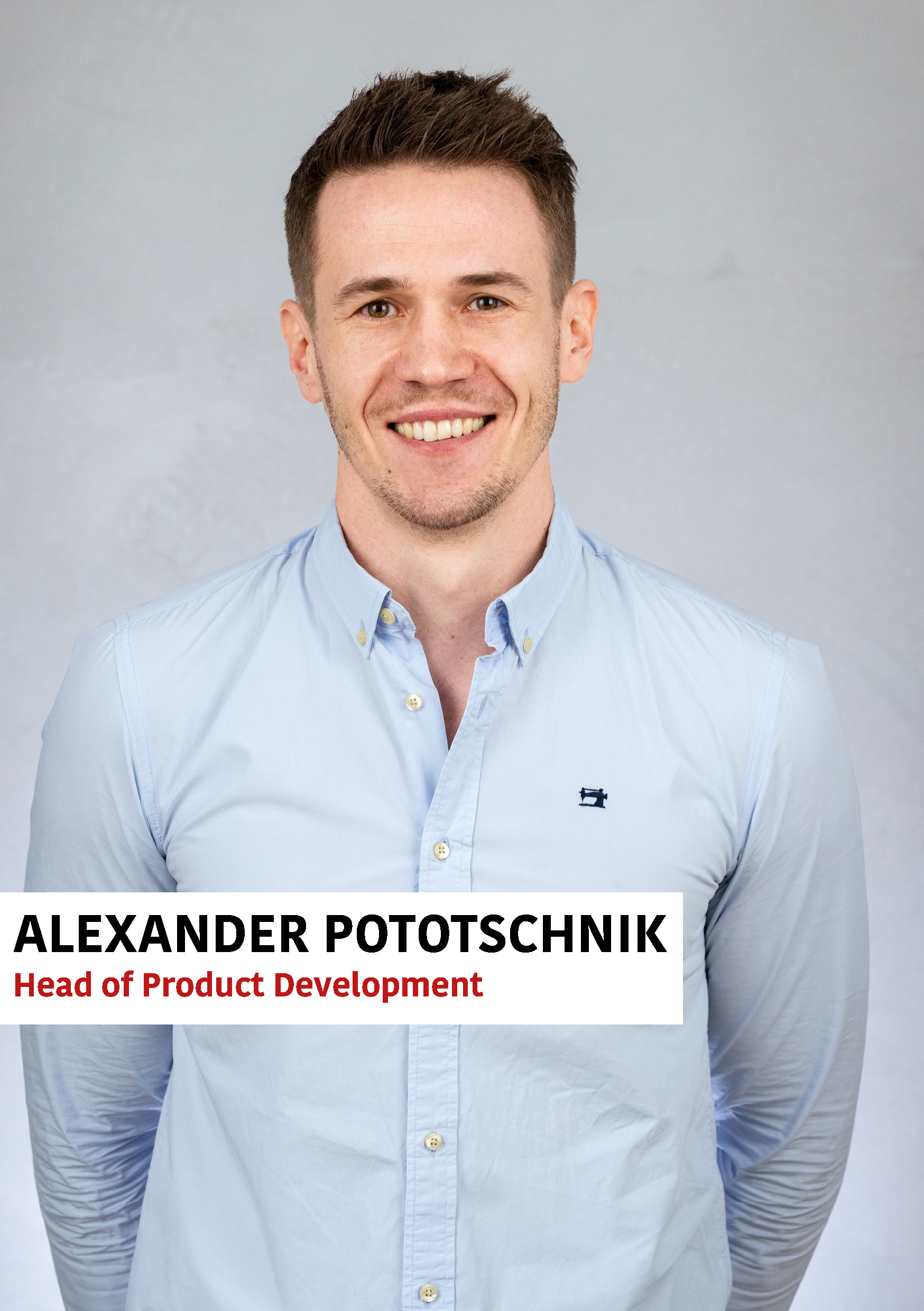
Alexander Pototschnik, MA
Alexander Pototschnik is Head of Product Development at BDI-BioLife Science. He studied food product development and resource management at the University of Applied Sciences in Wiener Neustadt, Wieselburg, and gained professional experience as a production manager at a cosmetics company. At BDI-BioLife Science he works with the active ingredient ASTACOS®, develops it further and deals with its application in cosmetic formulations.
